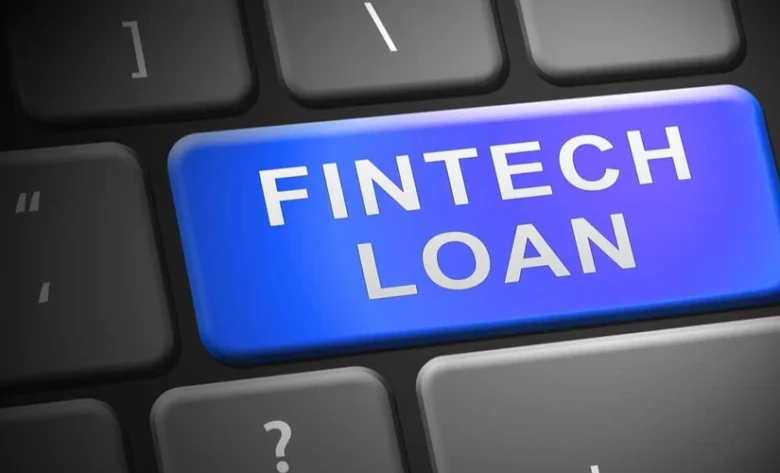In the past, applying for a loan required visiting a bank branch, completing extensive paperwork, undergoing a credit check, and then waiting days or even weeks for approval. Today, fintech lending platforms have changed this landscape, making the lending process faster, easier, and more convenient than ever. These platforms leverage technology and finance to provide individuals and businesses with instant access to credit through digital systems. Fintech lenders are changing the way people think about borrowing by reducing paperwork, speeding up approvals, and providing users with user-friendly online platforms.
The Rise of Fintech Lending
The growing demand for faster and more flexible lending solutions closely correlates with the rise of fintech lending platforms. Traditional banks have consistently imposed strict requirements for loan applications, which often prevent many individuals and small businesses from obtaining credit. With the digitization of the financial sector, fintech companies have entered the market with new lending methods. These platforms use powerful algorithms, artificial intelligence, and other data to assess borrowers’ creditworthiness. This allows them to process loans faster than traditional banks. As a result, millions of people are now using fintech websites to quickly and easily obtain loans.
How Fintech Lending Works
Fintech lending platforms use technology to determine a borrower’s ability to repay a loan. They may consider not only typical credit ratings but also factors such as income trends, transaction history, online behavior, and even social signals. Once someone applies for a loan through an online platform or mobile app, the system processes the information and disburses it instantly. These sites are ideal for people who need money urgently, as borrowers typically receive their funds within hours. The process is designed to be user-friendly and fast, significantly less stressful than traditional loan applications.
The Role of Technology in Fintech Lending
Fintech lending platforms are technology-driven, allowing them to provide services faster than traditional banks. Artificial intelligence and machine learning algorithms help platforms analyze borrower data quickly and accurately. Big data analytics helps lenders make better decisions by providing additional information about how people manage their money. Blockchain technology is also being explored to improve the security and transparency of loan transactions and reduce fraud. Mobile technology plays a crucial role in providing loans to individuals worldwide, as people can now apply for a loan directly from their phones. Fintech platforms have leveraged these technologies to develop a quick, user-friendly, and customer-friendly lending system.
Fintech Lending: Security and Trust
Fintech lending platforms are user-friendly, but they also need to protect user information and gain their trust. Because loans involve personal financial information, platforms use strong encryption, two-factor authentication, and fraud detection technology to protect consumer data. Clear lending terms also contribute to building trust by reducing the chance of misunderstandings. The financial system regulates many platforms, ensuring their reliability. By maintaining high standards of security and accountability, fintech lending platforms can build strong relationships with borrowers and gain broad recognition within the financial industry.
Issues Facing Fintech Lending Platforms
While fintech lending platforms offer several advantages, they also face pressing challenges. A key issue is regulatory compliance, as lending laws vary by country. Some borrowers may abuse these platforms, leading to high default rates and undermining their sustainability. Another concern is data privacy, as platforms must securely manage large amounts of personal and financial information. Furthermore, the fintech sector is highly competitive, making it difficult for many new companies to differentiate themselves or survive long-term. Fintech lenders must overcome these challenges to maintain growth and transform the lending industry.
The Future of FinTech Lending
As technology continues to evolve, more and more people are demanding fast, digital financial solutions, and the future of fintech lending looks bright. We expect a significant increase in the use of artificial intelligence, improved credit screening, and targeted credit processing. Blockchain technology can help make loan transactions more open and secure. Peer-to-peer lending is expected to grow further, directly connecting individual investors and borrowers. With the increasing use of mobile banking and digital finance, fintech lending platforms are likely to become the most popular form of credit. This will replace many traditional lending methods, making the financial system more open and accessible to everyone.
Conclusion
Fintech lending platforms have significantly changed the way individuals and businesses access credit. These platforms use technology to enable people who might otherwise not be able to obtain a loan from traditional banks to acquire one quickly, with clear terms and minimal hassle. While regulatory and security concerns remain, the benefits of fintech lending far outweigh the risks, making it a vital component of modern fintech. As the sector develops, fintech lending will play an increasingly important role in promoting financial inclusion and supporting economic growth. This is not a passing trend but a significant change in the way credit is provided and processed.
FAQs
1. What is the role of fintech lending platforms?
Fintech lending platforms are digital systems that use technology to provide loans quickly and easily, often without the intervention of banks or other intermediaries.
2. What does a fintech lending platform do?
These platforms use algorithms and other data to assess a borrower’s creditworthiness, issue a loan instantly, and deposit the funds directly into the borrower’s account.
3. Is it safe to use fintech lending sites?
Most fintech lending platforms have strong security features, including encryption and fraud detection; however, borrowers should always choose reputable and regulated platforms.
What types of loans can you get through fintech platforms?
Personal loans, payday loans, business loans, installment loans, and peer-to-peer lending are common types of loans.
Will fintech lending replace banks?
While traditional banks still exist, fintech lending platforms are becoming increasingly popular due to their speed, ease of use, and customer-friendly service. They are expected to take over the lending market in the future.



